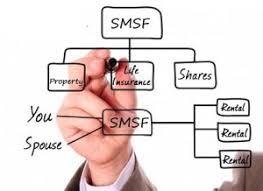Invest through an SMSF – another five most asked questions
Q Can i buy my business premises if I am a small business owner?
Generally, an SMSF is prohibited from acquiring property from its members. However, there are some excpetions. The relevant one here is business real property, which broadly means property used mainly for business purposes. Provided the asset is business real property and is acquired at market value, the SMSF can acquire (either as a purchase or in=specie contribution) the business premises from the member.
To avoid compliance issues, standard conveyancing processes and procedures should be followed. It is also recommended that the trustee speak to the SMSFs adviser to ascertain the stamp duty and capital gains tax implications of the transfer of the business premises before proceeding.
If the property is located in NSW, Victoria or Western Australia, the transfer of property may qualify for concessional transfer duty if the requirements for the concession are met (these vary from State to State).
Q Can i live in the property now or even in retirement?
You cannot live in the property while it is owned by the SMSF. Neither can any related party such as a child or parents. If you want to live in the property in retirement then you can take it out of the SMSF as a lump sum commutation once you meet a condition of release, such as leaving one employer after age 60 or once you reach age 65. You may have to pay stamp duty depending on which state the property is in. Some people buy an investment property within their SMSF and then when they retire they sell their home and use some of the proceeds to buy the SMSF property at market value from the fund when in pension phase. The capital gain on sale after retirement could be nil if the strategy is implemented properly.
Q Can i rent out the property to family and friends?
Business use of real property by a related party of the SMSF is permissible provided that the rent charged on the property is at a market rate in accordance with the arm’s length requirements under the Superannuation Industry (Supervision) Act.
Other compliance issues to be considered include the sole-purpose test and whether the arrangement amounts to providing financial assistance to family members.
If the terms of the lease are more for the benefit of the family members than for the SMSF, then this may be in breach of the sole-purpose test, as the trustee is not managing the SMSF for the sole purpose of the benefit of the members.
Also, if the terms of the lease are favourable to the family members to the extent that it amounts to using the SMSFs resources to give them financial assistance, then this may also be in breach of the prohibition contained in the act.
Q Can i subdivide or develop a property owned by SMSF?
Yes. However, the costs of subdivision or devlopment, such as payments for materials an dlabour generally, can only be made by the fund and not by the fund member or a related party. If any of the labour is carried out by the fund member or a related party (for example, the fund member is a builder), this must be authorised by the trust deed. Furthermore, these people should have the appropriate skills to carry out the work and they would need to be paid a commercial rate for their services. If the property is acquired by the fund with borrowings, then the SMSF rules do not allow further borrowings to finance the costs of the renovations. Under this scenario, the renovations would need to be financed by the existing funds of the SMSF, or additional contributions made by the fund members. Therefore, such a project may not be suitable for an SMSF, given the limitations on contributions.
Q What are the tax implications when I sell a property owned by an SMSF?
If an SMSF is in accumulation phase (not paying an income stream/pension), capital gains tax is applicable to the sale of assets held by the fund.
If the property has been held for less than 12 months, any gain made on the sale will be taxed at 15%.
If the property has been held longer than 12 months a discount of 33% will be applied to the capital gain prior to it being taxed at 15%, effectively a capital gains tax rate of 10%.
To demonstrate, an SMSF purchases a property in 2010 for $300,000. The property is sold in 2018 for $570,000. A capital gain of $270,000 is made. As the property has been held by the fund for more than 12 months, the $270,000 is discounted by 33% to $180,900. A tax rate of 15% is then applied to the discounted capital gain of $180,900, resulting in $27,000 tax payable. That is, 10% of the $270,000 capital gain.
If the SMSF is in retirement phase (paying a pension to its members), then there is no tax payable on any earnings on the fund. This tax-exempt treatment of fund earnings includes capital gains. Using the example above, a gain of $270,000 on the sale of a property in a fund that is in 100% retirement phase will not attract any capital gains tax.




Leave a Reply
Want to join the discussion?Feel free to contribute!